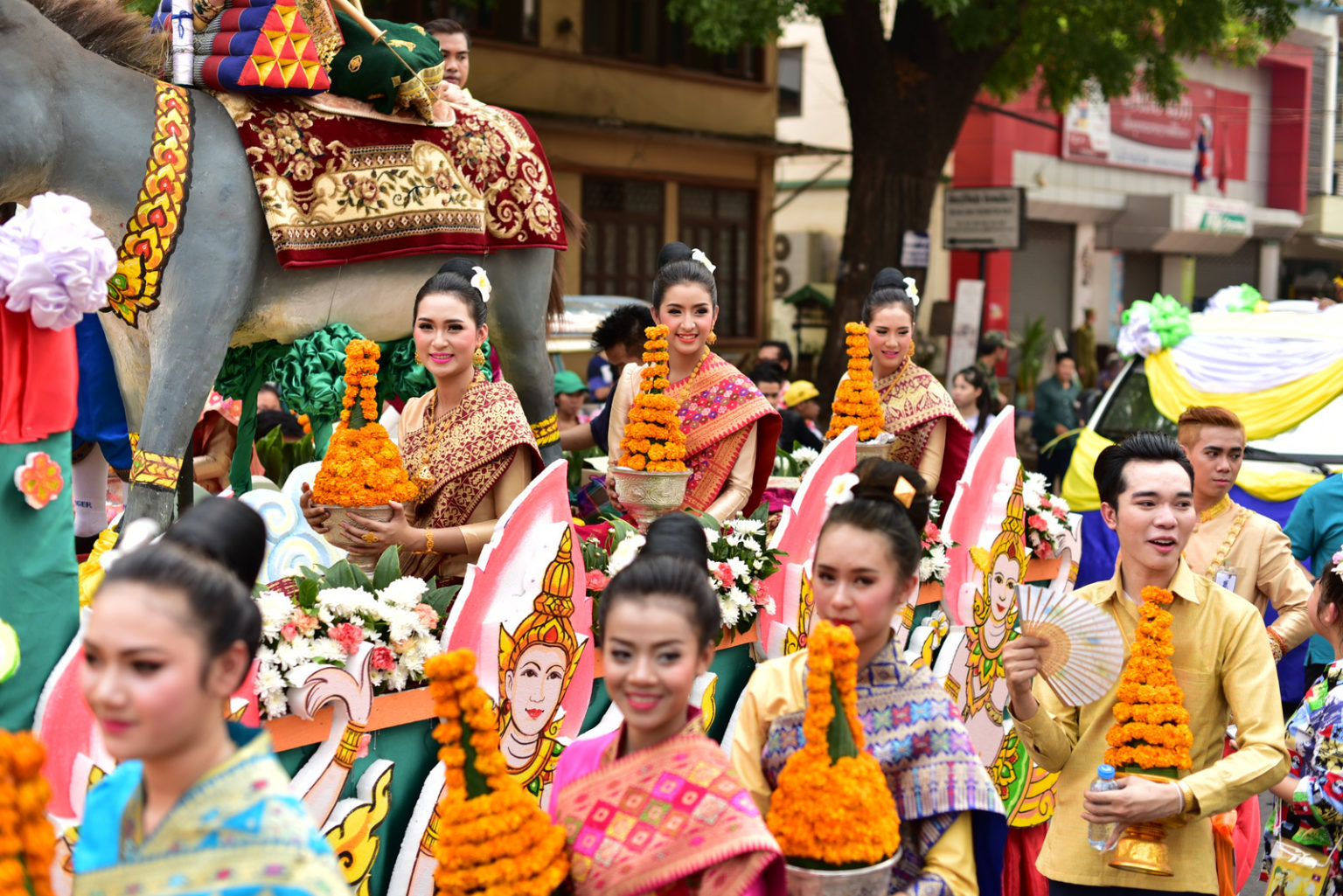
Learn about the Boun Pi Mai-Laos New Year
- on Feb 7, 2025 By: Phuong Mai NGUYEN
Boun Pi Mai, also known as Pi Mai, is one of the most significant festivals in Laos. The festival is celebrated throughout Laos, with Luang Prabang, one of the country's most important centers of Buddhism, being where the festival is most grandly held.
The Laos New Year festival attracts large numbers of tourists from all over the world each year. During this festival, tourists can enjoy the festive atmosphere and exciting activities while also discovering traditional Laotian culture. If you are planning a trip to Laos for Boun Pi Mai, here is what you need to know.
When does the Boun Pi Mai take place?
Boun Pi Mai, one of Laos’s biggest festivals, takes place every year in mid-April from April 14 to April 16. In some big cities, the celebrations might be longer.
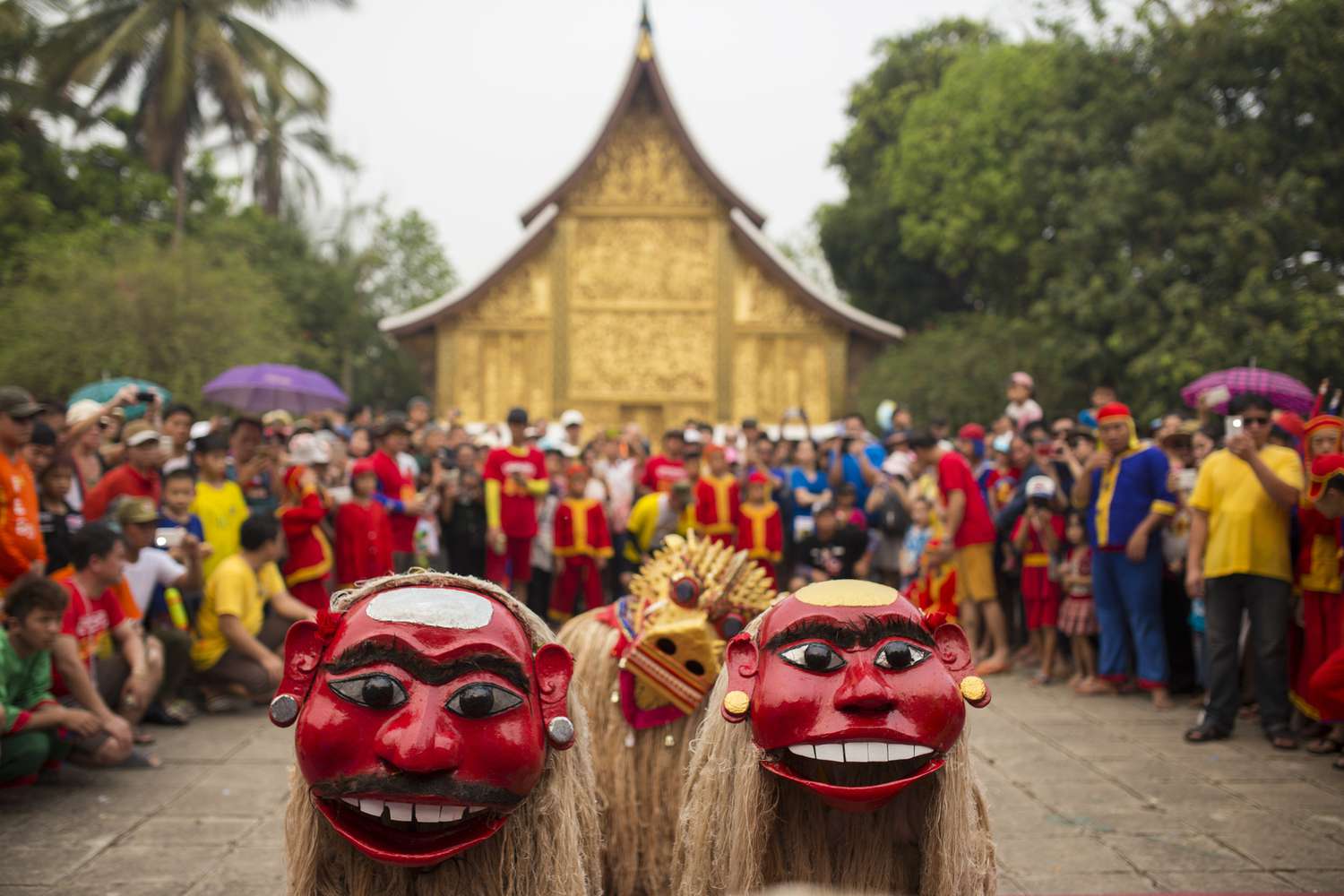
The Three Days of Boun Pi Mai
Similar to Thailand’s Songkran and Cambodia’s Chol Chnam Thmey, the celebrations of Boun Pi Mai include parades, dance performances, and water splashing. Laos New Year takes place over three days, each day having its own significance and accompanied by different activities.
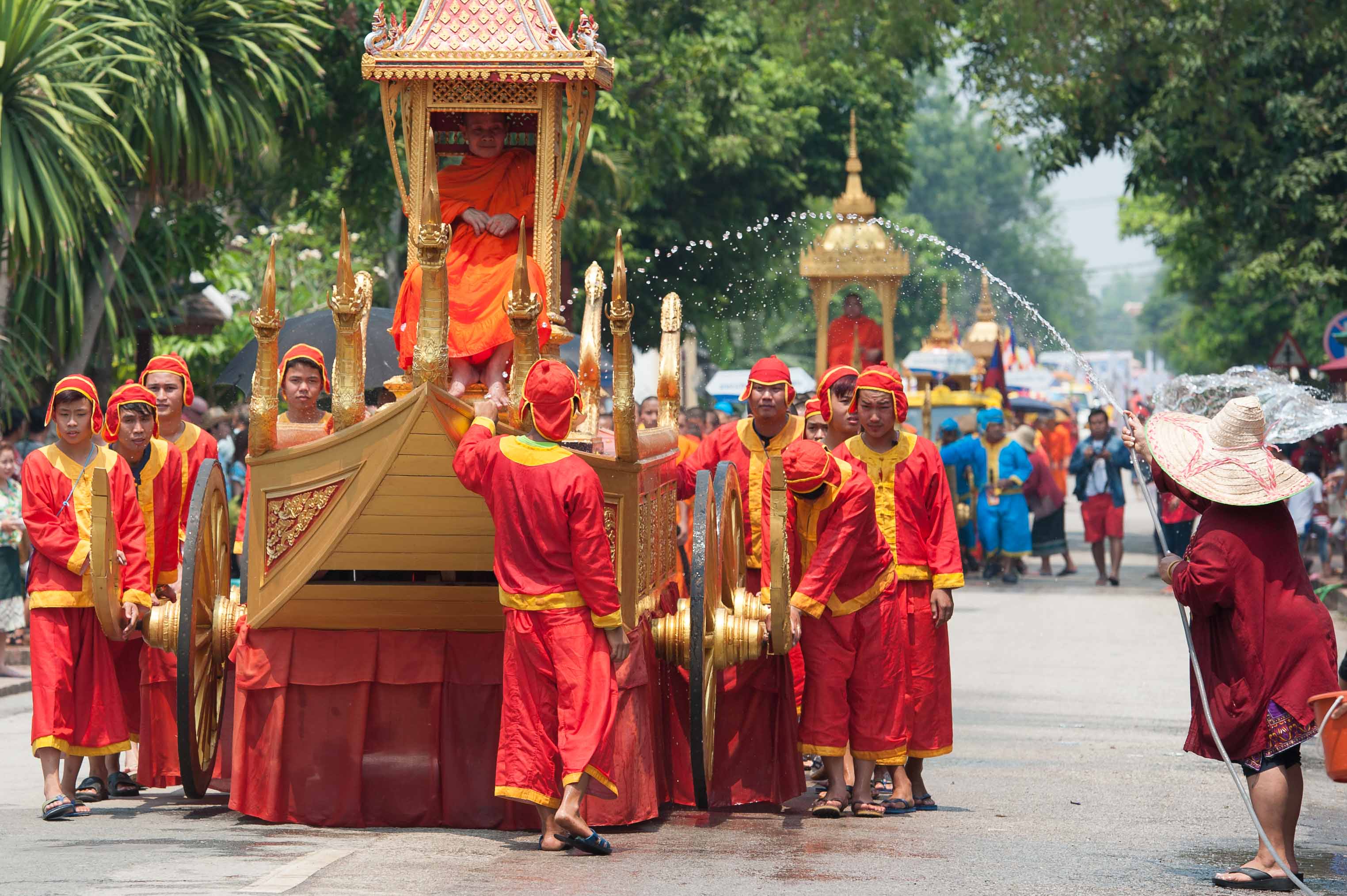
The first day of Boun Pi Mai is called Sangkhan Luang and is considered the last day of the old year. On this day, Laotians clean their homes and villages, as well as gather water, perfume, and flowers in preparation for the following days of the festival. Another important activity on Sangkhan Luang is visiting temples and pagodas to clean Buddha statues using scented water while also listening to monks' teachings. The water that drips from the Buddha statues is then brought home to be sprinkled on friends and family members as a blessing and a symbol of purification.
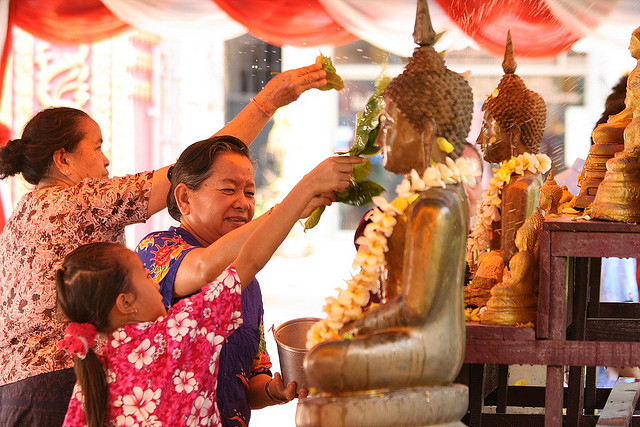
The second day, Sangkhan Nao, which translates to “the day of no day”, belongs to neither the old year nor the new year. This is the easiest day during the Boun Pi Mai festival, a day of rest that allows Laotians to enjoy themselves with family and friends without any rituals and obligations.
Sangkhan Kheun Pi Mai, the third day, marks the beginning of the Laos New Year and is the day when the most exciting activities take place. People dress in their finest attire and make offerings to temples. Additionally, the day is devoted to visiting family seniors. During the visit, Laotians wash the latter’s hands while asking for their blessing and forgiveness for any misbehavior during the past year. Later in the day, at the family gathering, members hold a ceremony called Baci with the purpose of strengthening bonds and calling for good luck and prosperity. On this day, people also practice “life release”, freeing captive animals such as fish, turtles, and crabs to generate good karma and wish for peace for the coming year.
Traditional rituals in the Boun Pi Mai
Laotians bathe Buddha representations in their local temples, using jasmine-scented water and petals to pour over the statues. Devotees also build sand stupas and decorate them with flowers and thread. The monks bless visitors to the temple and give them a white string called Bai Sri to tie around their wrists.
Like Songkran in Thailand, water splashing is a crucial activity during the Boun Pi Mai. People respectfully sprinkle water on monks and elders, while doing it in a more “violent” way to others. The more water they are splashed with, the happier they are, as they believe that they will be very lucky in the next year and that they are loved by many people. Laotians sometimes throw flour along with water, so by the end of the party, you may be both wet and mushy. Since foreigners are not excluded from the fun, get ready to get soaked!
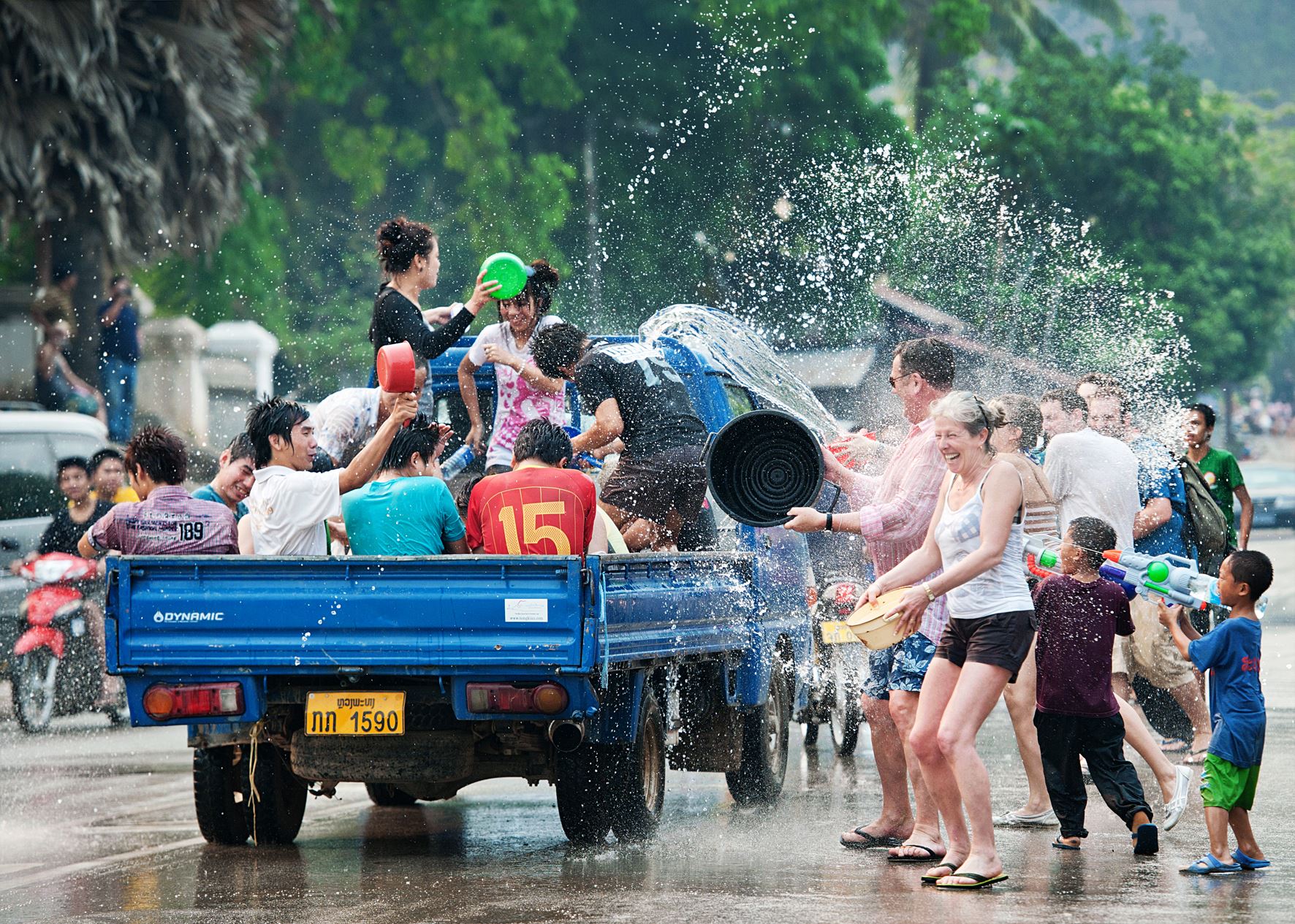
Celebrate the Boun Pi Mai in Luang Prabang
While Boun Pi Mai celebrations are held throughout Laos, tourists in Vientiane and Luang Prabang get the chance to observe the festival in all its splendor. In Vientiane, the capital’s residents make their way to various temples to bathe the Buddha statues, with Wat Phra Kaew, the city’s oldest temple, being the most popular. However, Luang Prabang, the country’s former royal capital and now a UNESCO World Heritage Site, is probably the best destination to celebrate Boun Pi Mai in Laos. In this city, the festivities can last for seven days and occur in many locations around the city.
Elephants dressed in bright colors and guided by mahouts (professional people who work with, ride, and tend elephants) kick off the first day of the New Year festivities by winding their way from Wat Mai to Wat Xiengthong. The first day is also marked by the Hae Vor procession, where the Pha Bang Buddha statue is carried through the streets on a golden palanquin. The leaders of the city’s most important Buddhist temples are carried in procession on pagoda-shaped palanquins, flanked by monks and other devotees. The winner of the Miss Pi Mai Lao (Miss New Year) beauty contest of the year also joins the parade, dressed as Nang Sangkhan and carried on an animal-shaped float, holding the effigy of a four-faced head.
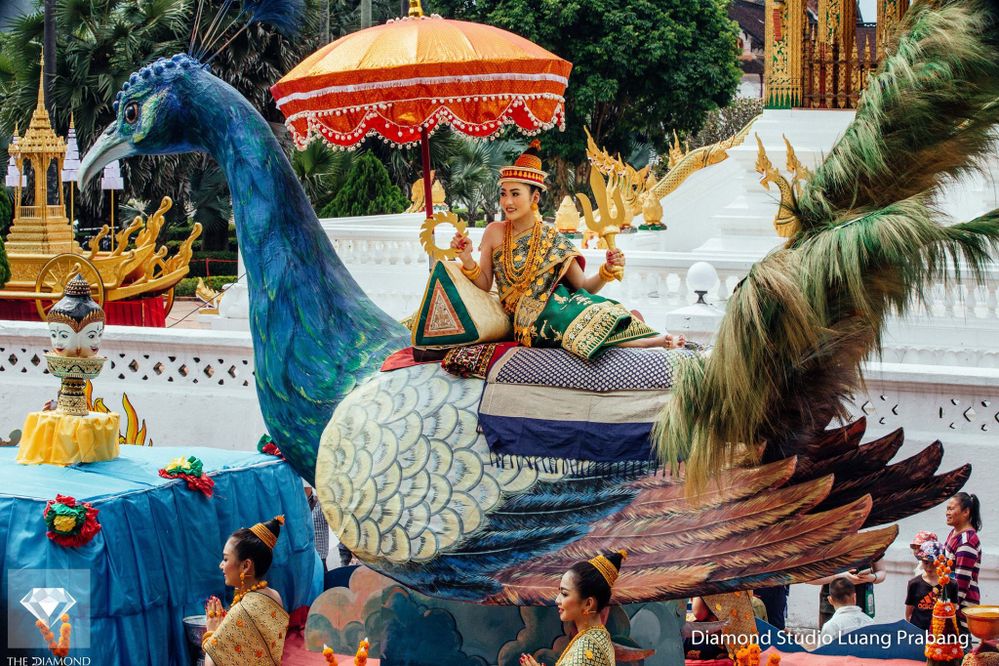
In addition to the Luang Prabang night market, the city holds many other fairs during the Boun Pi Mai celebration, namely the fabric fair in Phanom artisanal village and the fair in Lolat market.
Wat Mai Temple houses the aforementioned Pha Bang Buddha statue during the Boun Pi Mai after the procession from the Royal Palace Museum. During this time, the statue is bathed under pipes carved in the shape of legendary water snakes. The New Year celebration comes to an end when this statue is returned to the museum three days later.
Travel tips for tourists traveling to Laos during Boun Pi Mai
Since Boun Pi Mai coincides with Laos’s high tourist season, if you are planning to visit Luang Prabang, Vientiane, and/or Vang Vien during this period, book your tickets and accommodations at least 2 months in advance to avoid any disappointments.
Getting wet is inevitable during Boun Pi Mai. However, there are certain people to whom you will need to pay attention when splashing water, which are monks, elders, and even well-dressed people going to an important New Year’s event.
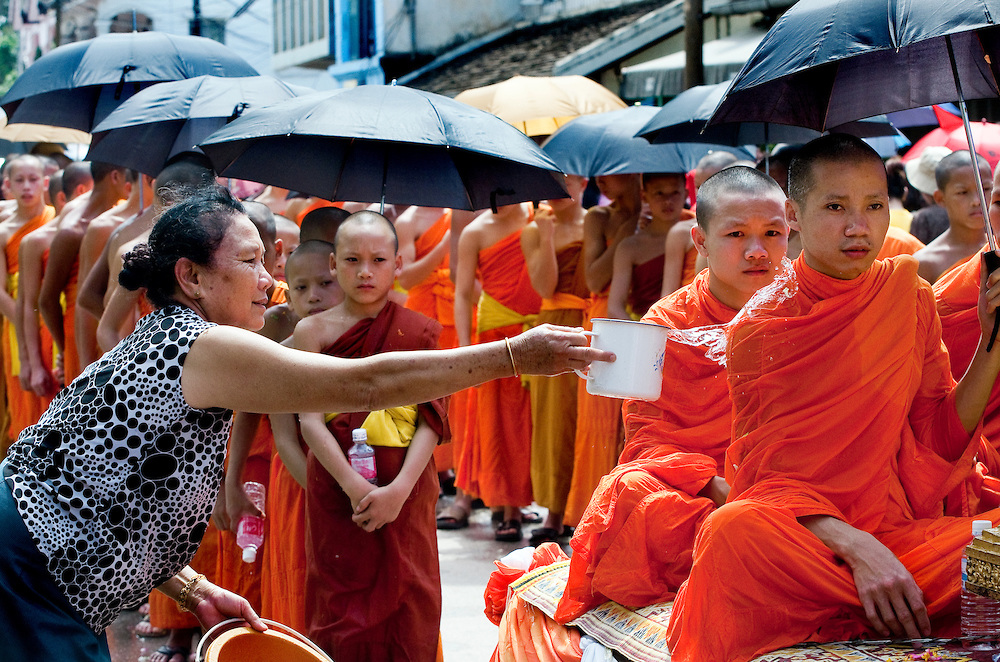
It’s recommended to know some easy phrases to address wishes for the New Year, such as Sok di pi mai or Sabaidi pi mai, which both mean “Happy New Year”.
Overall, Boun Pi Mai is an inspiring, worth-attending once-in-a-lifetime festival through which you can learn more about Laotian culture. We hope this article has provided you with everything you need to know about this fascinating festival before coming to Laos to enjoy it yourself in the future. If you need to know more about traveling to Laos, don’t hesitate to contact us via this email address sales@authentiktravel.com or +84 (0) 96 9 72 99 83 on WhatsApp; we will be happy to help!
Related articles:
>> Top 10 must-visit destinations when travelling to Laos
>> When to go to Laos? Climate, seasons, and weather in Laos
 Español
Español Français
Français






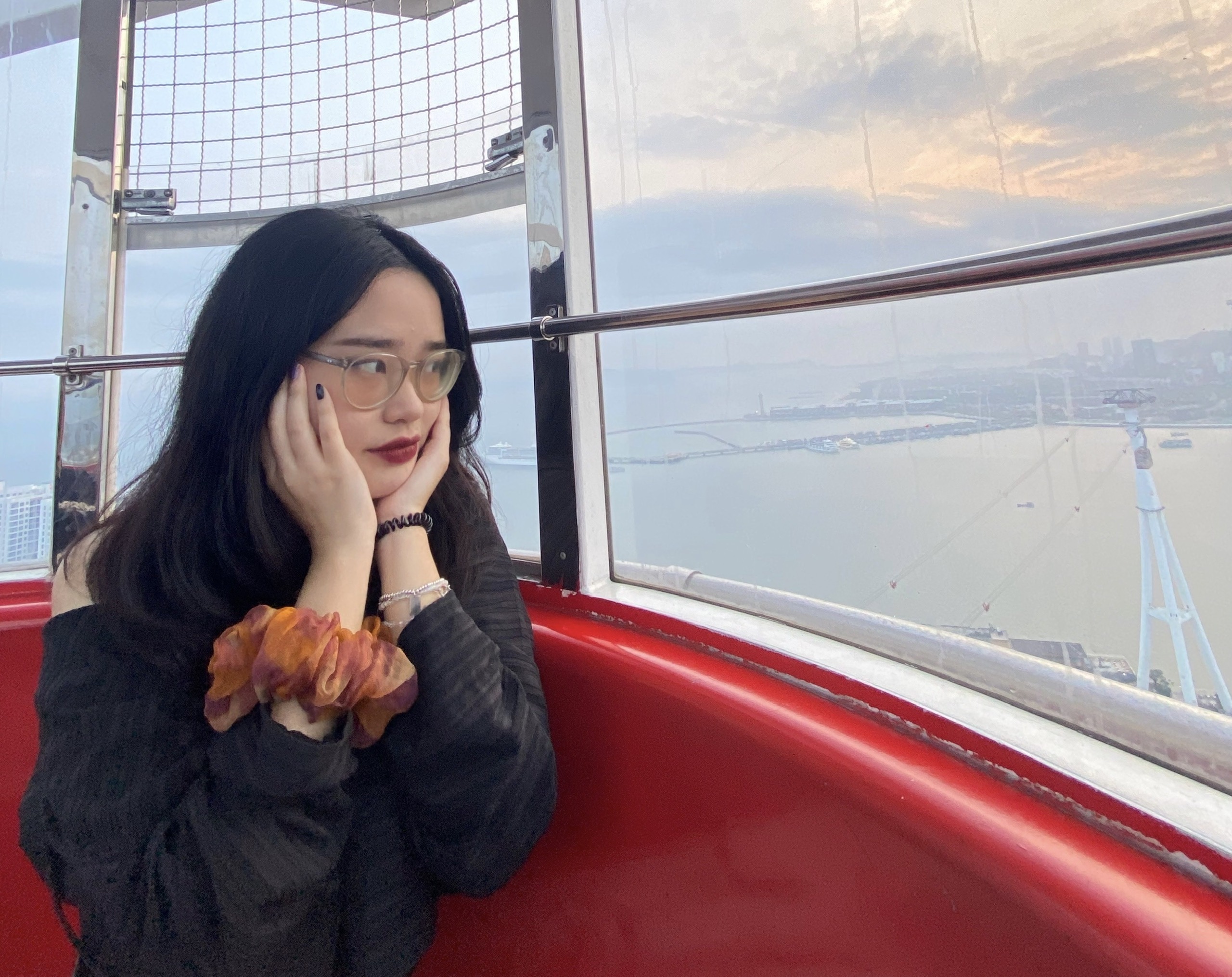
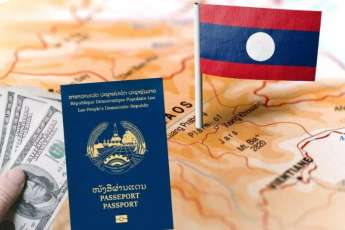
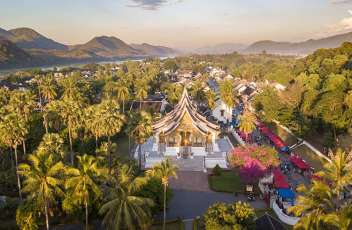
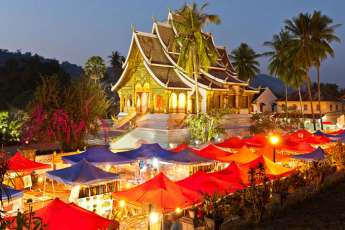
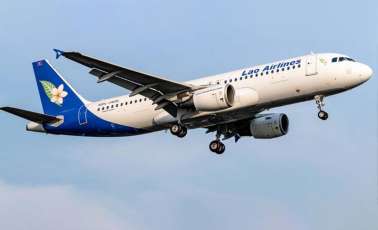
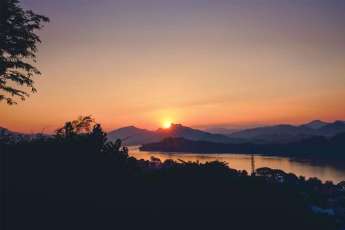
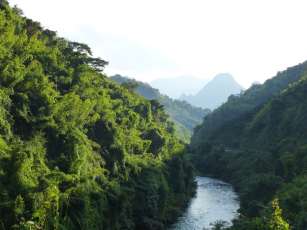





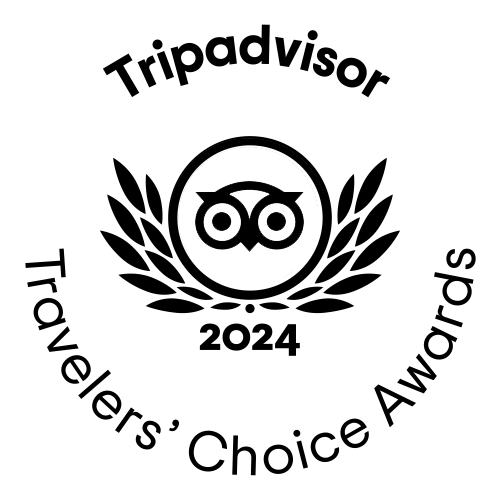

HerbertPhomaMS
on Oct 19, 2025Lilyan Cuttler
on Oct 15, 2025Avenue17XC
on Sep 14, 2025Avenue18JL
on Jul 21, 2025Judi Haigh-Smith
on Jun 29, 2025